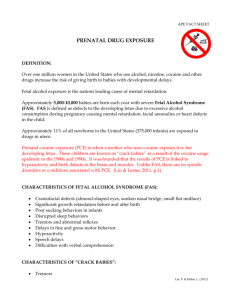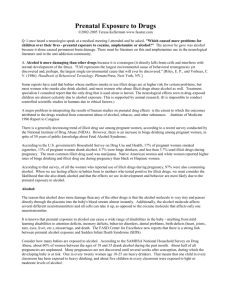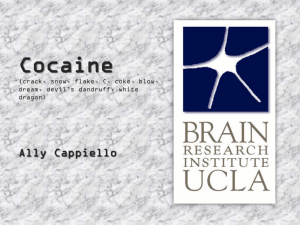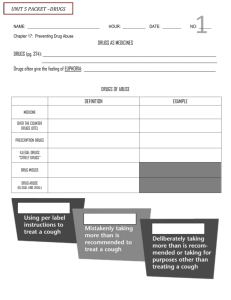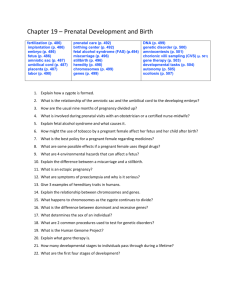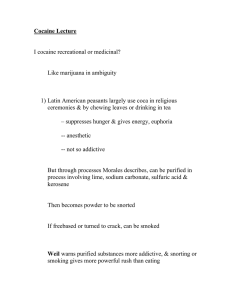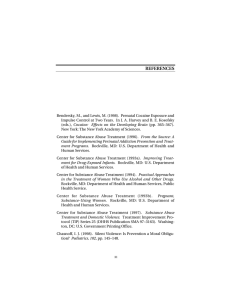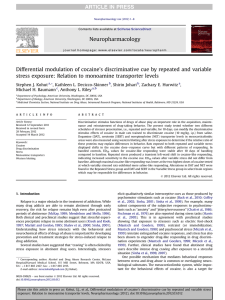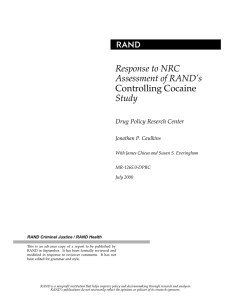RESOURCES FOR WOMEN AND CHILDREN AFFECTED
advertisement
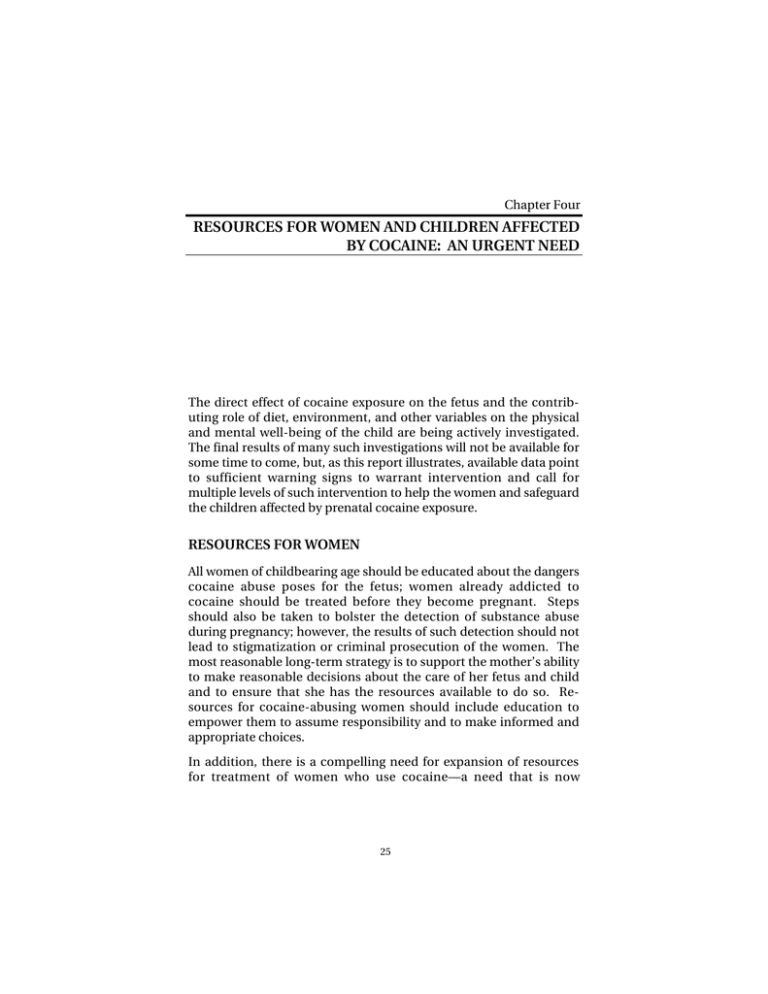
Chapter Four RESOURCES FOR WOMEN AND CHILDREN AFFECTED BY COCAINE: AN URGENT NEED The direct effect of cocaine exposure on the fetus and the contributing role of diet, environment, and other variables on the physical and mental well-being of the child are being actively investigated. The final results of many such investigations will not be available for some time to come, but, as this report illustrates, available data point to sufficient warning signs to warrant intervention and call for multiple levels of such intervention to help the women and safeguard the children affected by prenatal cocaine exposure. RESOURCES FOR WOMEN All women of childbearing age should be educated about the dangers cocaine abuse poses for the fetus; women already addicted to cocaine should be treated before they become pregnant. Steps should also be taken to bolster the detection of substance abuse during pregnancy; however, the results of such detection should not lead to stigmatization or criminal prosecution of the women. The most reasonable long-term strategy is to support the mother’s ability to make reasonable decisions about the care of her fetus and child and to ensure that she has the resources available to do so. Resources for cocaine-abusing women should include education to empower them to assume responsibility and to make informed and appropriate choices. In addition, there is a compelling need for expansion of resources for treatment of women who use cocaine—a need that is now 25 26 Prenatal Cocaine Exposure: Scientific Considerations and Policy Implications being increasingly acknowledged and investigated (Kaltenbach and Finnegan, 1998). The National Institute on Drug Abuse has developed and tested gender-specific treatment models (e.g., Rahdert, 1996), and the increased availability of resources and facilities will improve the success of the primary and secondary prevention strategies described above. Because drug abusers often face additional problems, such as poverty, homelessness, violence, and psychiatric illness, it is important that treatment centers offer comprehensive care. The Center for Substance Abuse Treatment recommends that services be provided within a multilevel model that includes intensive outpatient, residential, and other health-care and social services (Center for Substance Abuse Treatment, 1994, 1997). Kaltenbach and Finnegan (1998) also emphasize the importance of providing comprehensive care for substance-abusing pregnant women, including high-risk obstetrical care, psychosocial services, and addiction treatment. Such care can help reduce complications associated with prenatal substance use. The researchers point out that although comprehensive services are expensive, they are ultimately cost-effective because they reduce the negative impact of prenatal cocaine exposure, lower the cost of hospital stays, and minimize foster-care and childprotective-service placements. Despite the differing views on a number of issues pertaining to women who use cocaine during pregnancy, there is general agreement that addiction treatment is an essential component of the social response to this problem. The federal government has funded research on addiction treatment in several ways, for example, by increasing set-asides from federal substance-abuse-treatment block grants, by preferentially enrolling pregnant women for treatment, and by establishing demonstration treatment programs for drugabusing women (Chavkin et al., 1998b). RESOURCES FOR CHILDREN The consequences of fetal brain injury—whether induced by prematurity, malnutrition, asphyxia, or drugs and alcohol—are critically influenced by the postnatal environment. In fact, the brain-injured infant is especially dependent on early stimulation and optimal care to promote compensatory mechanisms that can minimize the im- Resources for Women and Children Affected by Cocaine: An Urgent Need 27 pact of prenatal insults. Early identification of infants at risk for developmental compromise and appropriate provision of services are therefore important goals. Regardless of the types of treatment interventions recommended for prenatally exposed children, it is critical that the interventions be implemented within a caregiving environment; this is particularly important in view of the chaotic home life of many of the children. Treating problems of prenatally exposed children without addressing their environment is ineffective because a poor-quality environment strongly reinforces problem behaviors (Mayes, in Slotkin, 1998). Drug-abusing women often withdraw from interacting with their babies. Treatment plans should therefore include a specific set of caregiver/child behaviors. As discussed above, well-designed intervention programs provide significant benefits to children at risk due to problems induced by prenatal drug exposure. Increasing the resources available for pregnant and reproductive-age women with drug problems and providing intervention services for drug-exposed infants and children can minimize the impact of a significant and preventable cause of disability in the United States. Such an investment benefits not only those women and their children, but all of American society.

